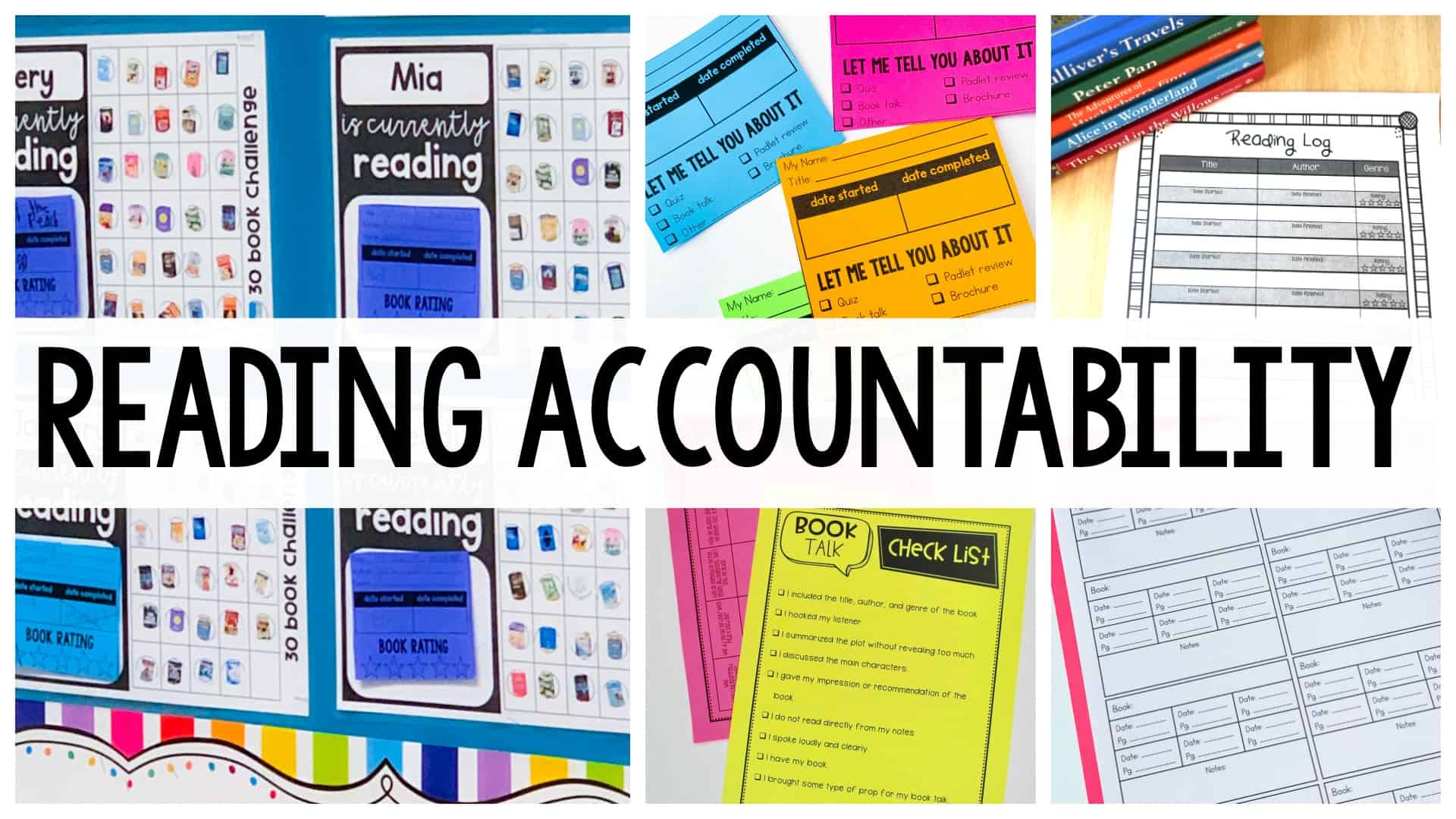
Does this sound familiar to you? You sit at your small group reading table during independent reading and scan your classroom. You see one student sitting quietly staring at their book. You notice that they’re not tracking anything. It’s almost like they’re sleep reading. You see another student “finish” five books in the 15 minutes they’ve been reading. There’s another student who has been choosing a new book for a solid 20 minutes. Then there’s another student, pretending to work on the computer. However, it’s pretty obvious that the “work” is some type of computer game. There’s another student who is reading the same book they started two months ago. Don’t forget the student who takes advantage of all your seating options within just a few minutes. And there’s the runner, that’s the student who immediately needs to leave the room as soon as independent reading time begins.
Maybe you haven’t see all of these, or maybe you have….in one day! Trust me, it’s normal. Holding students accountable for their independent reading has always been a significant challenge for reading workshop. Many of us love reading and would do most anything for uninterrupted reading time, but some of our students aren’t there….yet. The goal is to get our readers to the point where they no longer avoid reading. But as many of us quickly learn, the students who haven’t yet reached their potential as readers are the ones who avoid it at all cost.
This leads us to the big question of, “How do I hold my students accountable for reading?”
Reading Logs for Accountability
Historically, students were asked to complete reading logs. I’m personally not a fan of reading logs for two reasons.
- They become a burden on your avid readers. As a student, that was me. I constantly read—to the point that the worst consequence my parents could give me was to take away my book. I see this with my students too. These students are already at that point of reading because they want to, not because they have to, and I don’t want to disrupt that.
- They become a power struggle for my struggling readers. They may not fill them out at all, which then puts me in the position of determining what I’m going to do about that. Do I really want to punish a student for that? Or, they may simply lie on the reading log. I don’t want to back students into a corner where they feel like they have to be dishonest.
However, I’ve talked to many teachers who don’t have a choice, so I made a reading log with a twist. Rather than having students write in their reading log each day, they write when they begin and end a book and give it a rating out of five stars. Students can use this with the books they are reading at home and at school. This reading log can be found in my first reading unit.
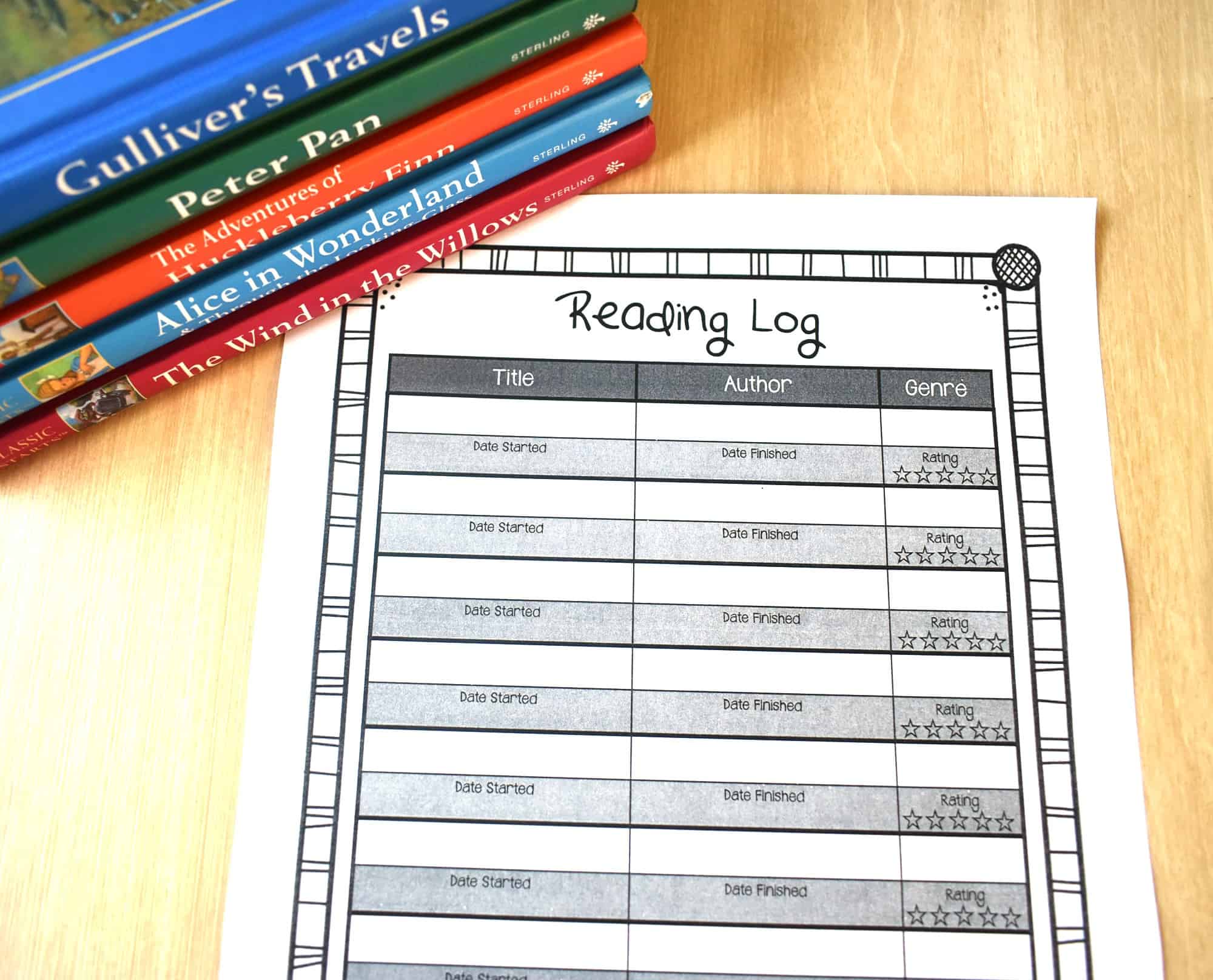
Status of the Class
At least once a week, I check in with each student and record the book they are reading. We have a brief conversation about the book, so I can make sure the student understands what they are reading. This also allows me to see if my students are finishing books and how long it is taking them to read a book. If I have a student spend six weeks on one book, then something’s wrong, and we discuss the situation. It’s a highly effective and simple reading accountability tool. This form is also found in my first reading unit.
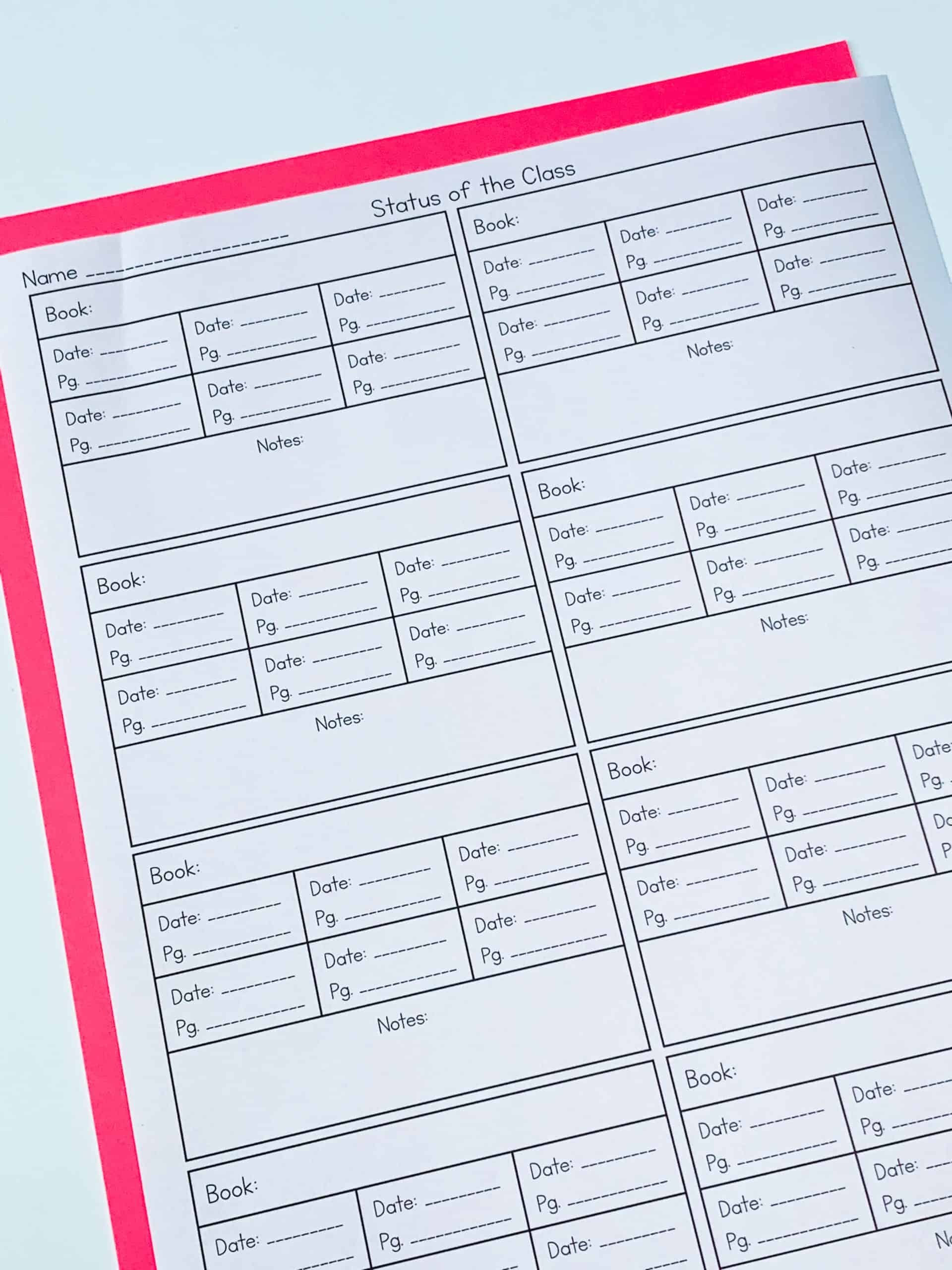 I keep my status of the class forms in my teacher binder. This is on the immediately behind each student’s data/reading profile sheet.
I keep my status of the class forms in my teacher binder. This is on the immediately behind each student’s data/reading profile sheet.
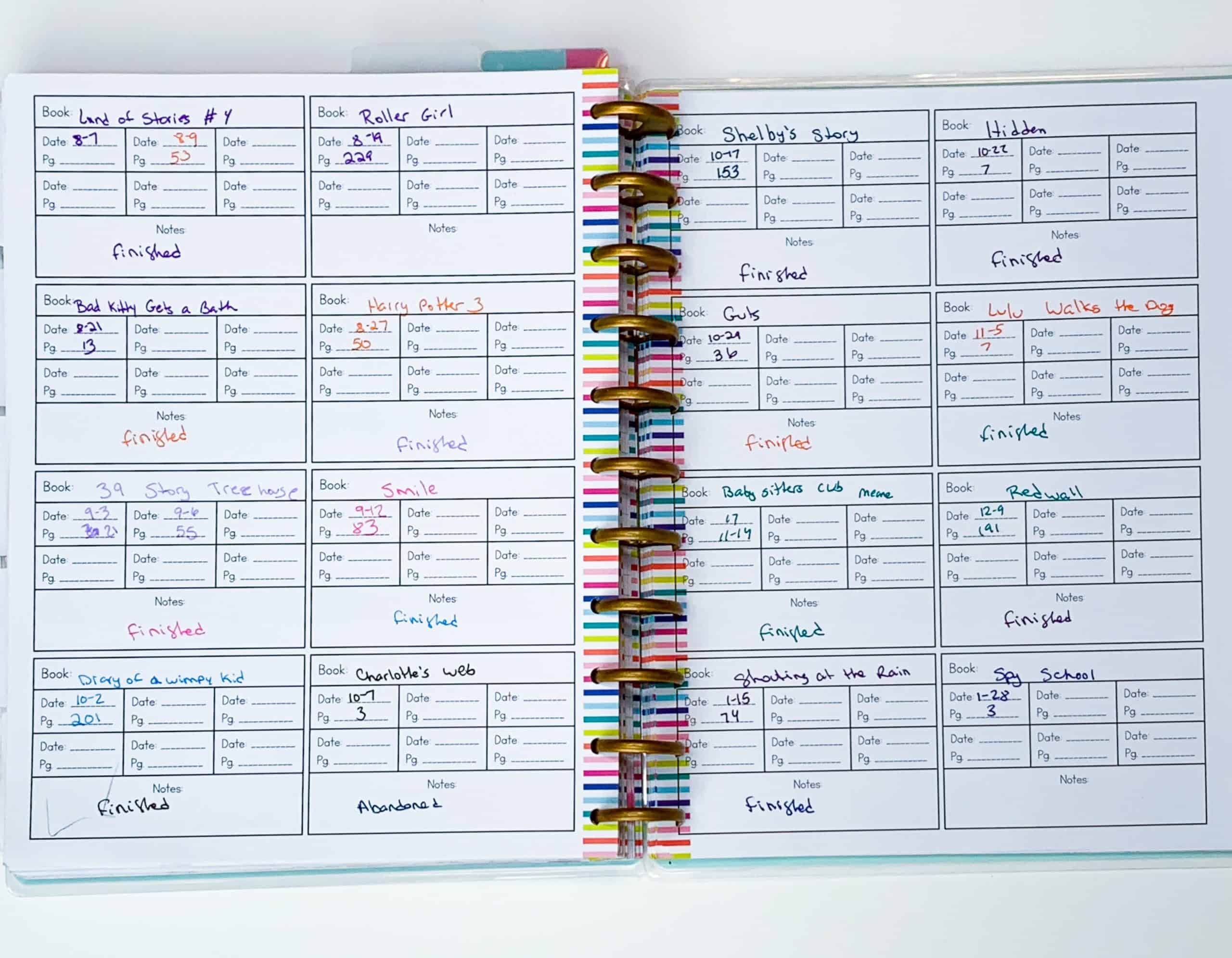
30 Book Challenge
For a reading bulletin board, I set up a 30 book challenge. I originally wanted a 40 book challenge as mentioned in the amazing Book Whisperer. However, I found that 40 was a little overwhelming for some of my students. I always avoid stress, so I stepped back a little.
I customize a “poster” for each student. As students finish a book, they add a sticker to their poster. The goals is to finish 30 books by the end of the year.
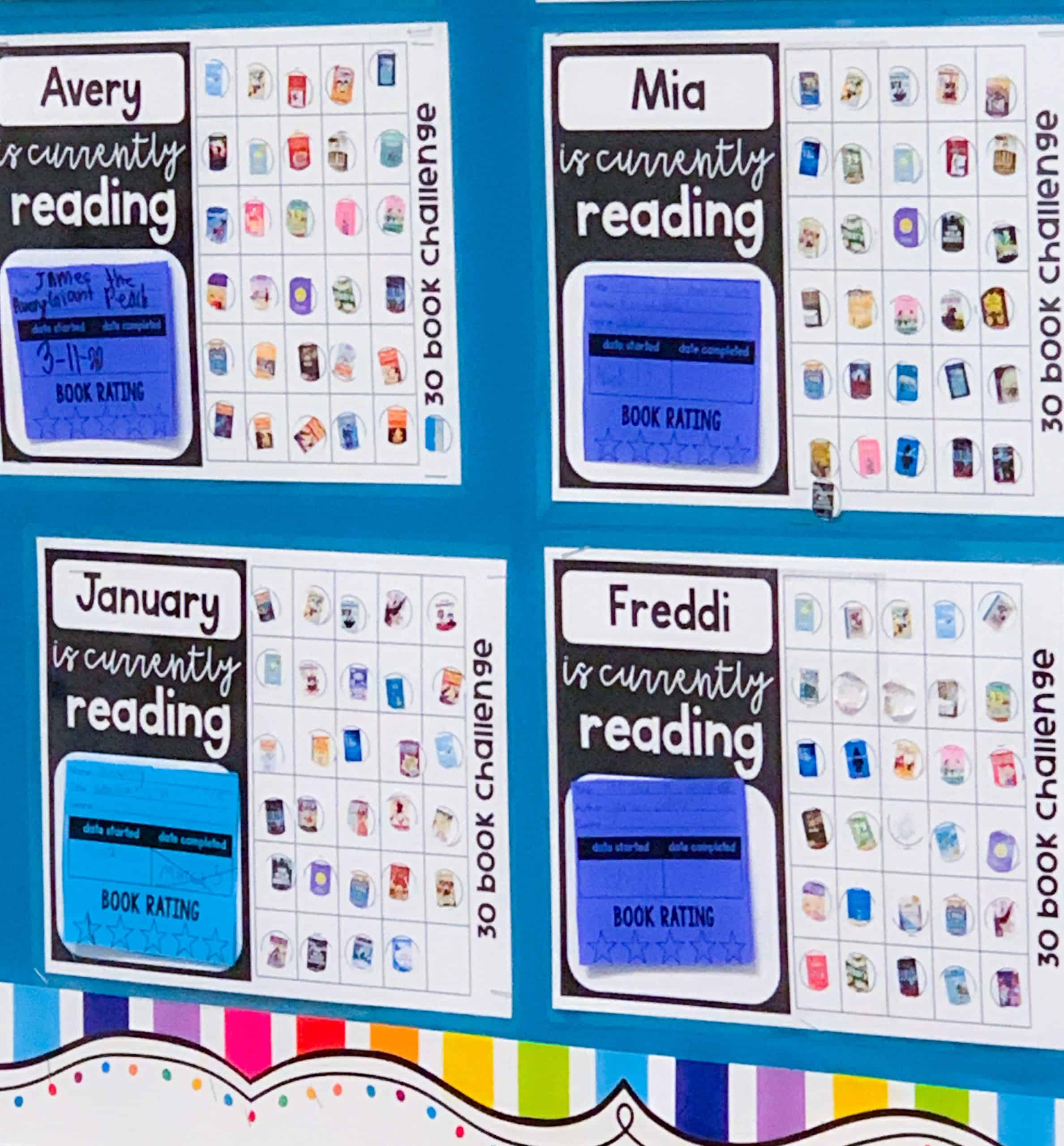
Being that I like to create a lot of completely unnecessary work for myself, I print images of the covers of books on stickers for students. It would be much easier to use different colors and color code different genres. I’d love to share my already made labels with you, but I’m fairly confident that would be violating a lot of copyright rules.
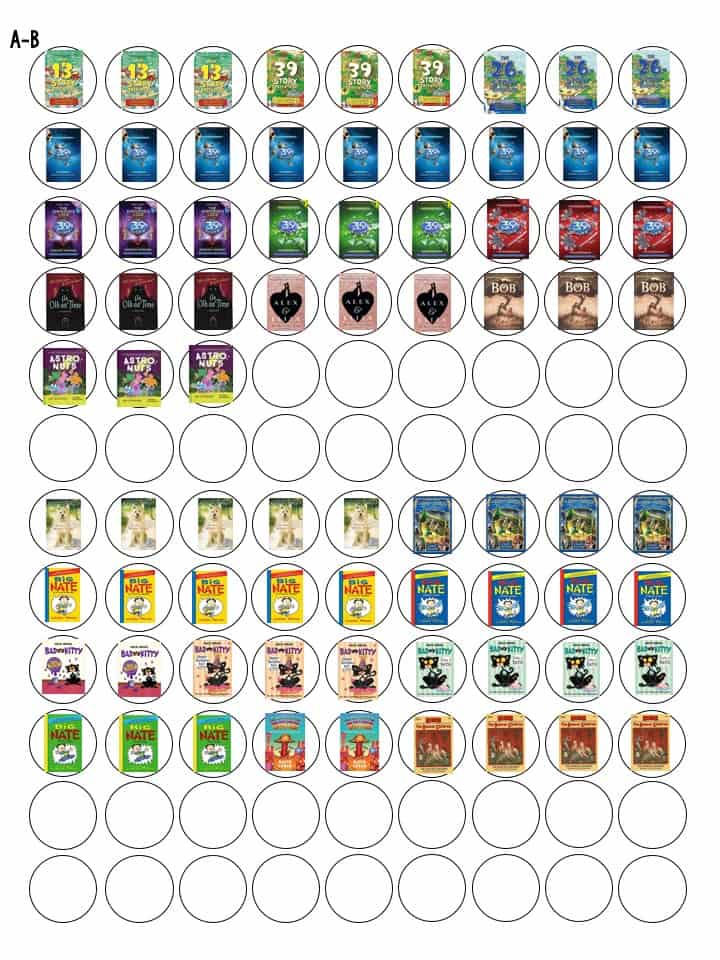
I originally planned to print the labels on sticky notes, but that was going to be way too time consuming for me. Then, I thought about making custom sticky notes, but that was going to be way too expensive. Finally I settled on printing on colored paper and having students tape the label to their poster.
You can download the poster and label here. You can use any font for your students’ names.
Accelerated Reader
It’s hard to think of many reading topics more controversial than Accelerated Reader. As with most things, it all depends on how it’s implemented. Below are a few things to consider when implementing Accelerated Reading.
- We certainly don’t want our students only reading for points or extrinsic rewards and inadvertently send the message that reading isn’t fun.
- We also don’t want our students to not read a book, simply because it’s not AR.
- Avoid limiting students’ level of comprehension to the type of AR questions students encounter. These questions are often lower level questions and are frequently quite random in relation to the overarching theme and meaning of the text.
- It’s important to never turn reading into a chore or punishment.
- Remember, students will learn how to work the system. Many students read books far below their ability level so they can read them quickly and get points. Some students may turn to only reading summaries or only reading books that have been turned into movies.
All that being said, I can still see some benefits. With larger and larger class sizes and and less and less time, it’s hard to meet with all students individually on a consistent basis. It’s even harder to keep up with all of the new releases of great children’s literature. I want to …. I really do, but it’s not always realistic or feasible. That’s where I see the value of AR or something similar. There will always be some students that you will have to pay particular attention to in relation to reading accountability, and online reading quizzes can be a big help.
Book Talks
Book talks are an amazing way for you and your students to share books you love with each other. Book talks are informal presentations designed to inspire others to read a book you enjoyed. The purpose of a book talk is to “sell” a book. Students may think of a book talk as a movie trailer for books. Students should give enough of the plot to interest their classmates, but they do not give a complete summary of the book. They never want to give away the ending of their book, because the main purpose of a book talk is to grab the audience’s interest and make them want to read the book. Book talks are usually presented to groups of students, where the presenter presents the book orally with the book and a visual prop or even costume.
When preparing for a book talk, I give students a planning guide and checklist. It is broken into four segments and describes what students should do in each segment. Most students find the checklist particularly helpful, because it clearly indicates what is expected in the book talk.
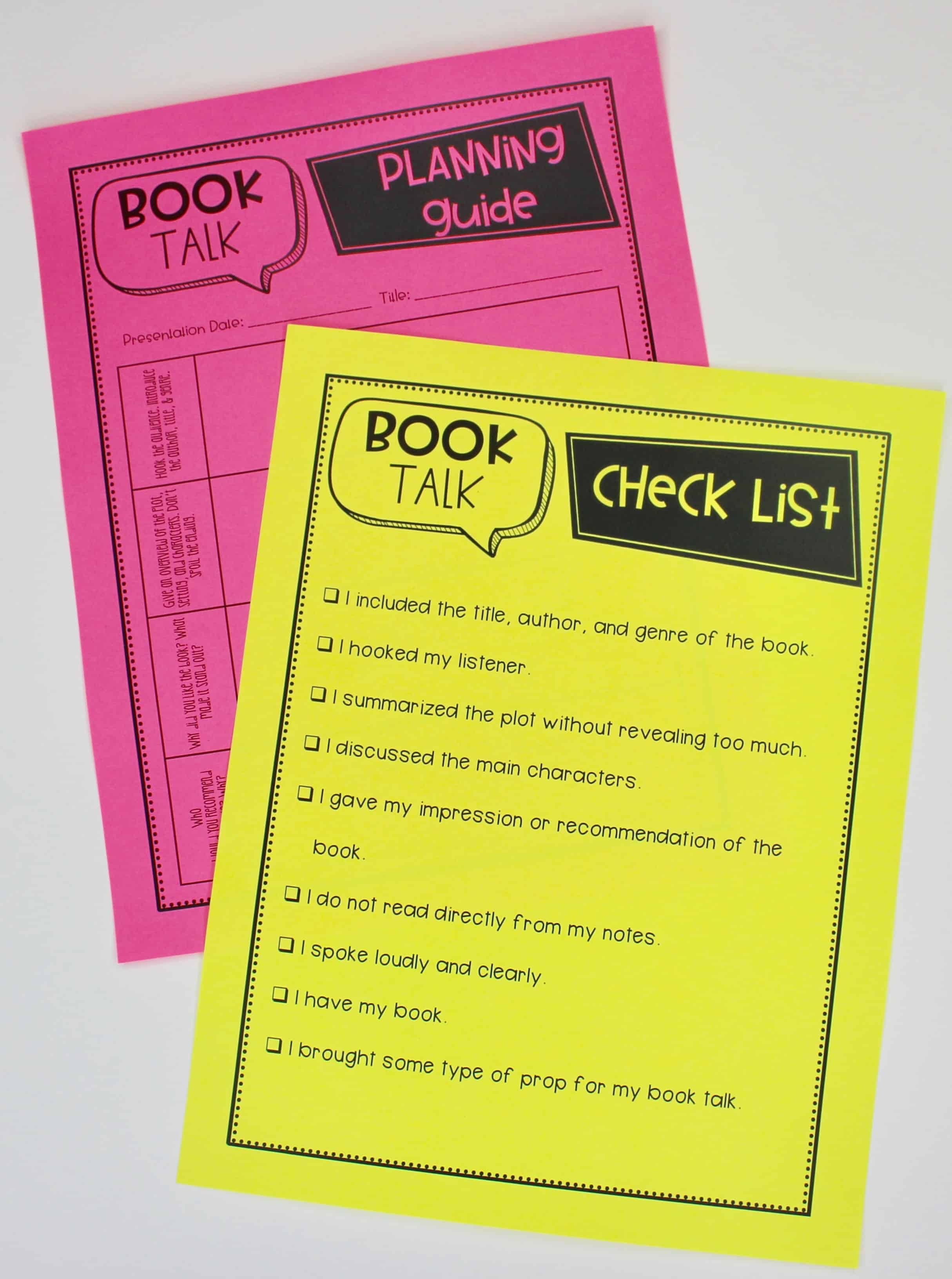
You can download all of the form for a book talk here!
What I Avoid
Excessive writing. Yes, during many of my reading workshop tasks, students write about reading. They write on sticky notes during our mini lessons. Students complete a weekly reading response. I have my class work on extended writing with paired passages, so we do write a lot. However, I don’t assign additional writing assignments for the sole purpose of reading accountability. We don’t want our students to dread independent reading because of all the writing. It’s also important to build in time for the writing to ensure that all students have time for daily independent reading.
Choices
This school year, I’m taking it up a notch. Rather than using the forms I shared above, I’ve created an alternative form. This will allow my students to choose how they want to share that they’ve read and understood their book. They may take an online quiz. We don’t have AR so I’m researching alternatives. They may present a book talk for the class. They may post a review on Padlet, which you can read more about here. They may also complete a book brochure on their book.
During the procedural lessons on the first week of school, I’ll spend time teaching how to complete each of these choices. It’s important to explain where the materials are kept, when students should work on their choice, what to do when students complete their choice, etc. Best of all, each of these choices can be completed with distance learning. If students choose book talk, they’ll share their book talk on FlipGrid.
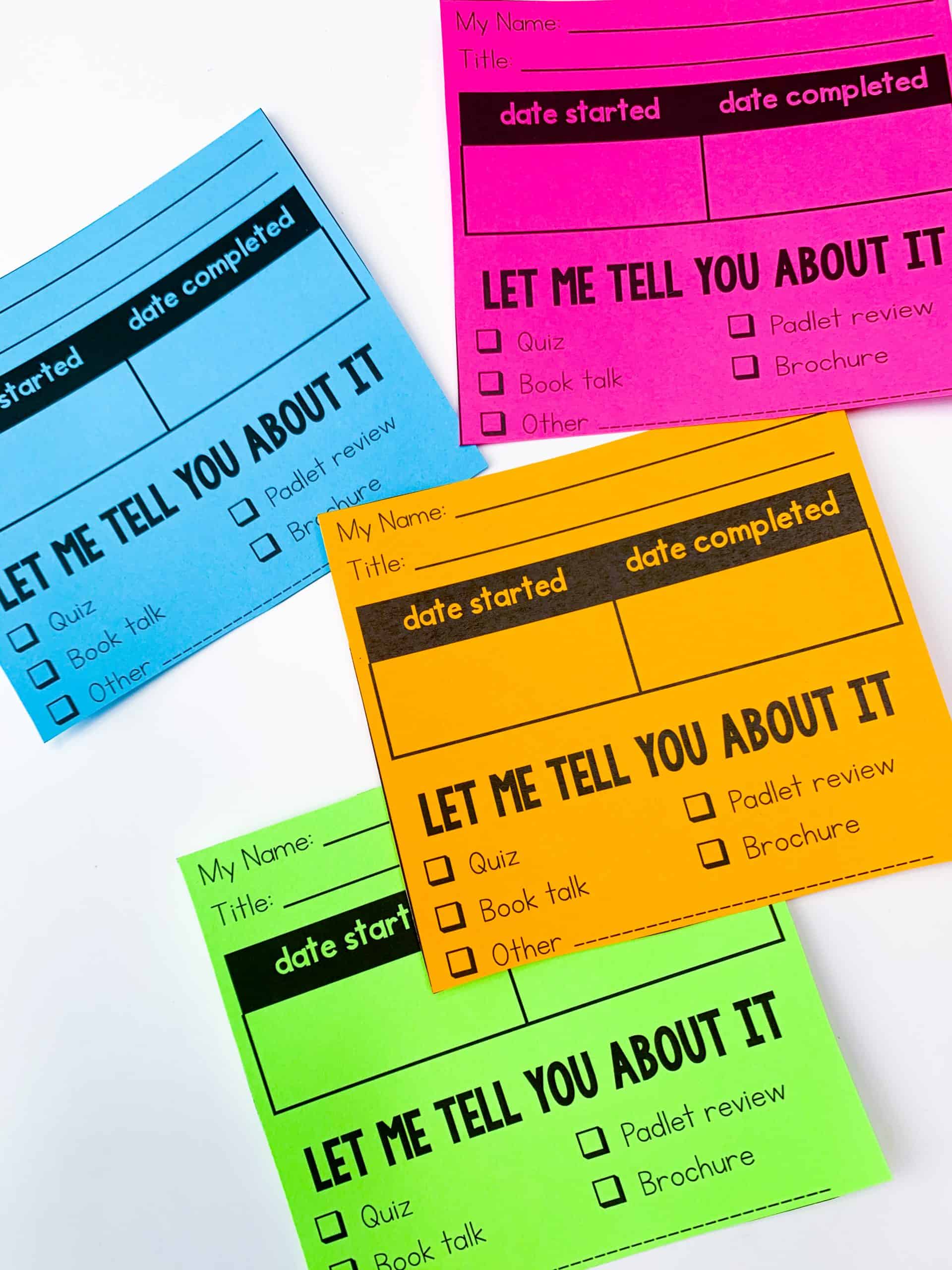
As always, I will reserve the right to allow a student to bypass this step altogether. If I’ve already had a conversation with the student about their book, I won’t require this extra step. No program, form, challenge, ANYTHING will ever take the place of authentic conversations with students.



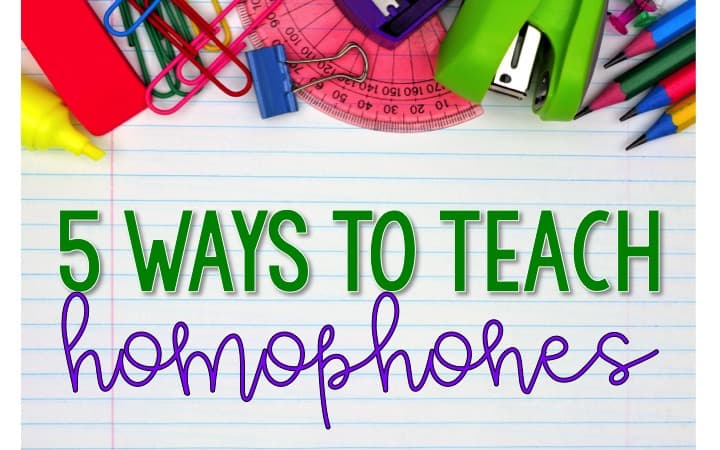
LOVE all of these ideas so much! Thank you!! Where can I get a copy of the last form (alternative form)?
I’ll add it to the original!
Hello! These are such great ideas…just wondering what labels you use to make the stickers with the book covers on them. I’ve been trying to figure out the best way to make, organize, and print these…I tend to make wayyy more work for myself than necessary, too. thanks!
Thank you for the ideas and thr original perspective. I’m trying to inspire my son (he’s almost 3) to read more. I think that what you’ve shared above will going to help. Thanks again!
Do you have a copy of the “Reading Log” paper? I think it is a great idea. I have had several students start and stop books. Thanks. Lorraine
Are you looking for the one on the top? It’s in this reading unit.